The economic impact of COVID-19 is undeniable. In the face of closures and shifting consumer behavior, businesses across the world have had to adapt to rapidly changing economic circumstances.
At HubSpot, we’re asking ourselves the same questions many of you are: What now? What should we change about our strategy, and what can go on, business as usual? If we have to make changes, where should we invest our resources and focus?
It can be hard to get a clear picture of how the market is changing in real time. There’s a plethora of headlines about the state of business today, but reliable data that shows how behaviors are shifting week over week are few and far between.
Like you, we’re looking for some concrete benchmarks. We looked at aggregated data from our global customer base of 70,000+ companies to understand how business metrics are shifting as the world grapples with the global pandemic.
From now until the end of June, we’ll plan to update these insights based on additional business metrics such as website traffic, email send and open rates, sales engagements, close rates and more. While it’s too early to make definitive predictions, we hope this establishes useful benchmarks to measure your business against, and serves as an early indicator of when short- or long-term adjustments to your strategy may be needed.
Over time, we plan to add further breakdowns (such as by channel and company size). You can sign up to be notified of new insights as they’re available here.
About the Data
- These insights are based on aggregated data from over 70,000 HubSpot customers globally.
- Our first cut includes weekly trend data for core business metrics in 2020, focusing on changes occurring in March 2020.*
- The data from HubSpot’s customer base reflects benchmarks for companies that have invested in an online presence and use inbound as a key part of their growth strategy.
*The spread of COVID-19 has had a different timeline in different regions, so we are using the World Health Organization's declaration of a global pandemic on March 11, 2020 as our “official” start date.
NOTE: Because the data is aggregated from HubSpot customers’ businesses, please keep in mind that individual businesses, including HubSpot’s, may differ based on their own markets, customer base, industry, geography, stage, and/or other factors.
What We’re Seeing
Buyers are seeking out and interacting with businesses more today than a month ago. This is at least partially due to the fact that stay-at-home orders and business closures have moved many transactions online out of necessity, but it shows that for now, buyers are still looking to engage.
However, deal creation volume is down, a decline that will impact most businesses’ sales forecasts. Responses to sales outreach have decreased as well, suggesting that sales strategies need to be adjusted to reflect the current buying reality.
External factors like budgets and industry-specific impacts from COVID-19 will inevitably affect sales cycles, but the data suggests businesses have an opportunity to attract and engage interested customers.
How Metrics Changed in March
The number of closed-won deals and new deals created are declining.
As economic uncertainty has led many businesses to reassess their financial health, we saw the number of closed-won deals drop. The volume of new deals has decreased as well -- as a leading indicator of pipeline health, this metric indicates that effective prospecting is more important than ever.
The weekly average of deals created decreased globally by 17% the week of March 16, and fell by 23% by the week of March 30, when compared to prior global averages for those weeks. Region-specific data are included below.
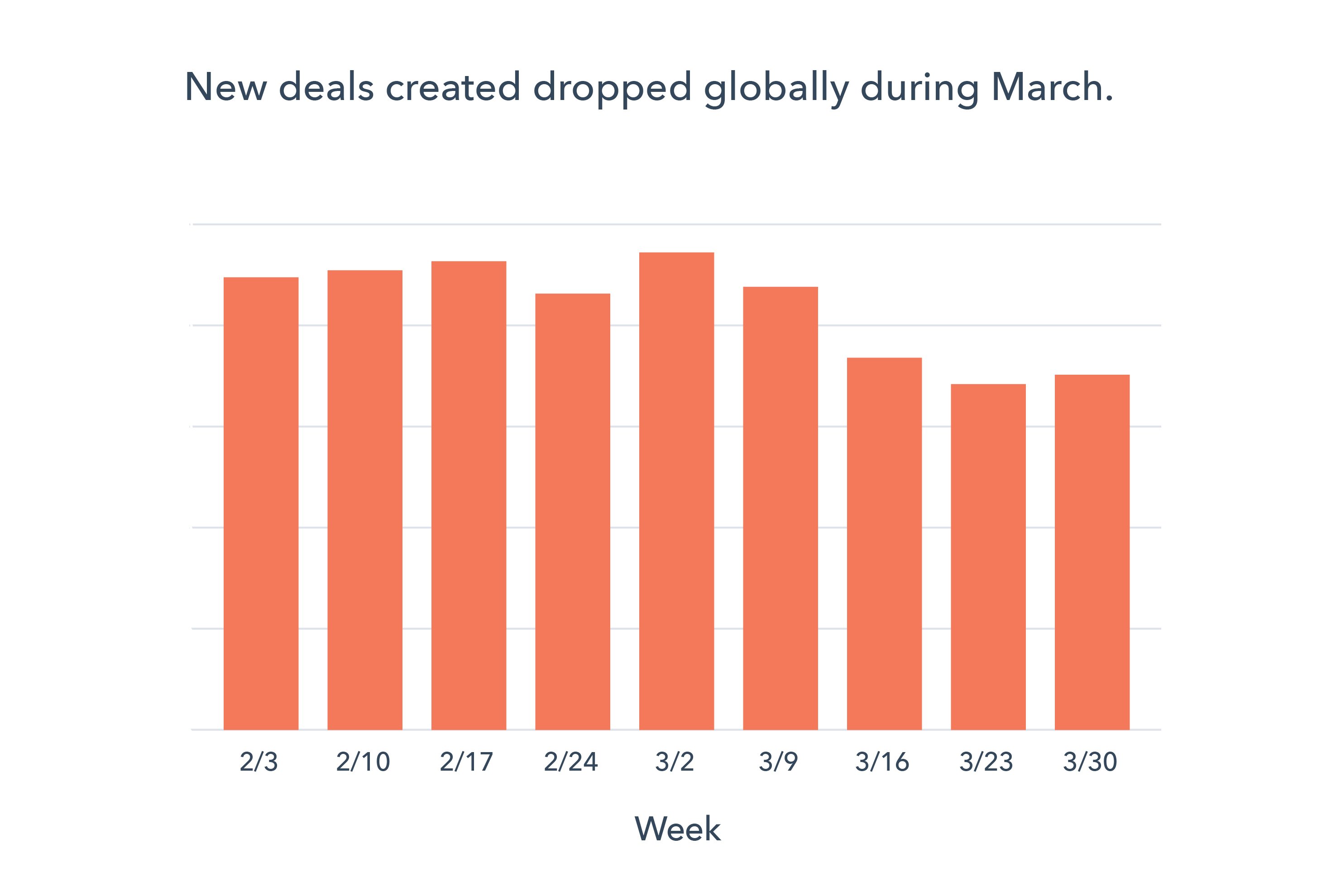
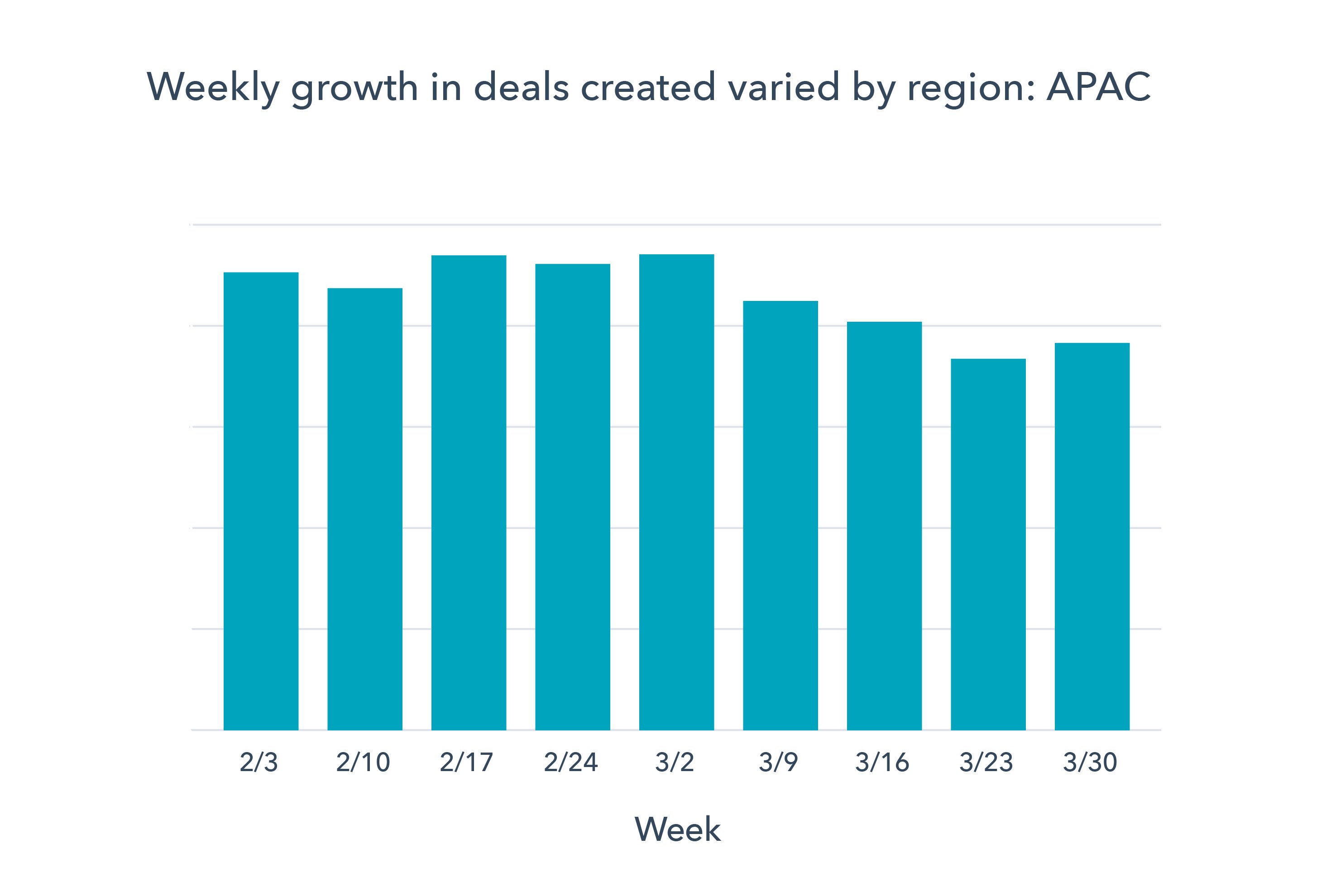
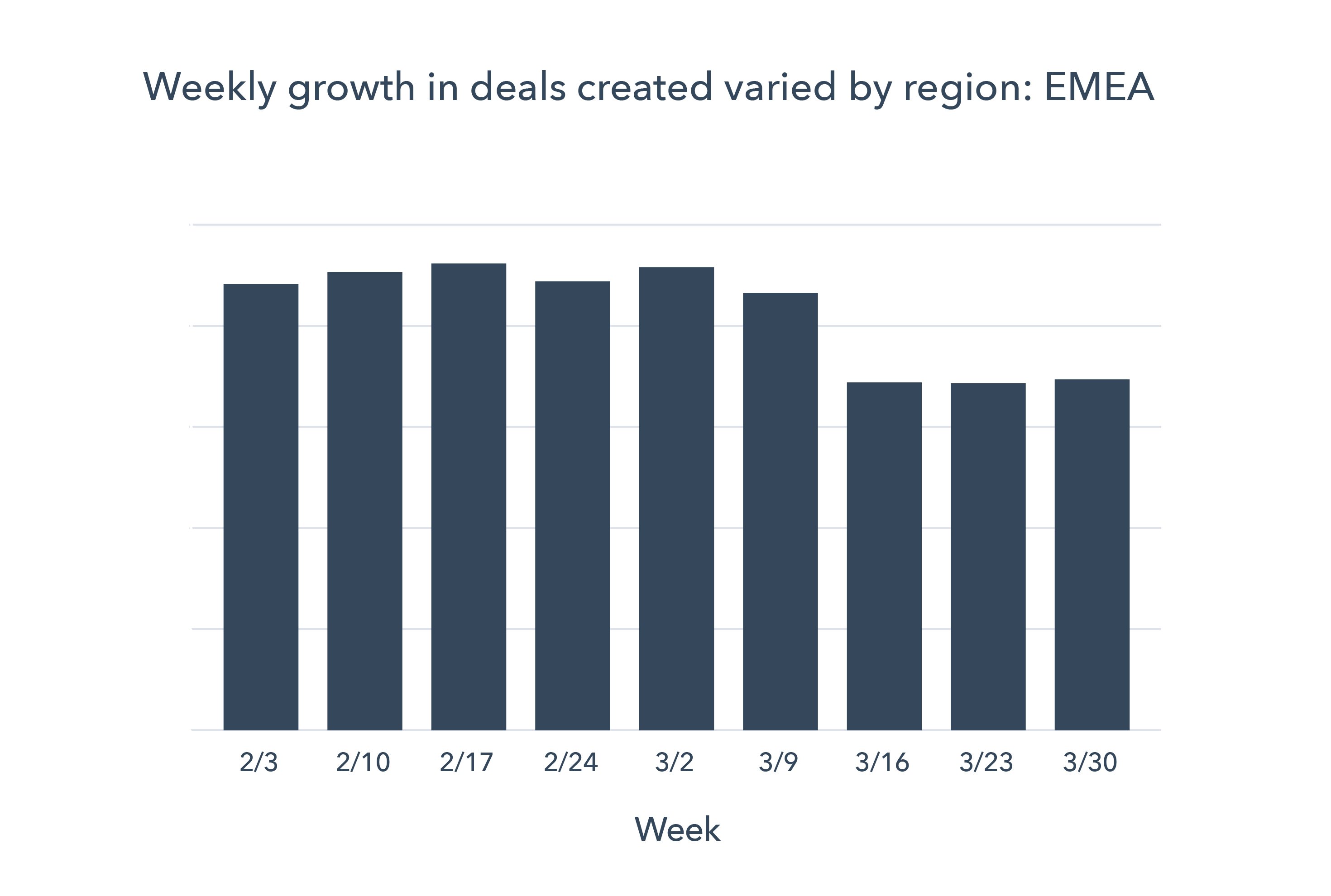
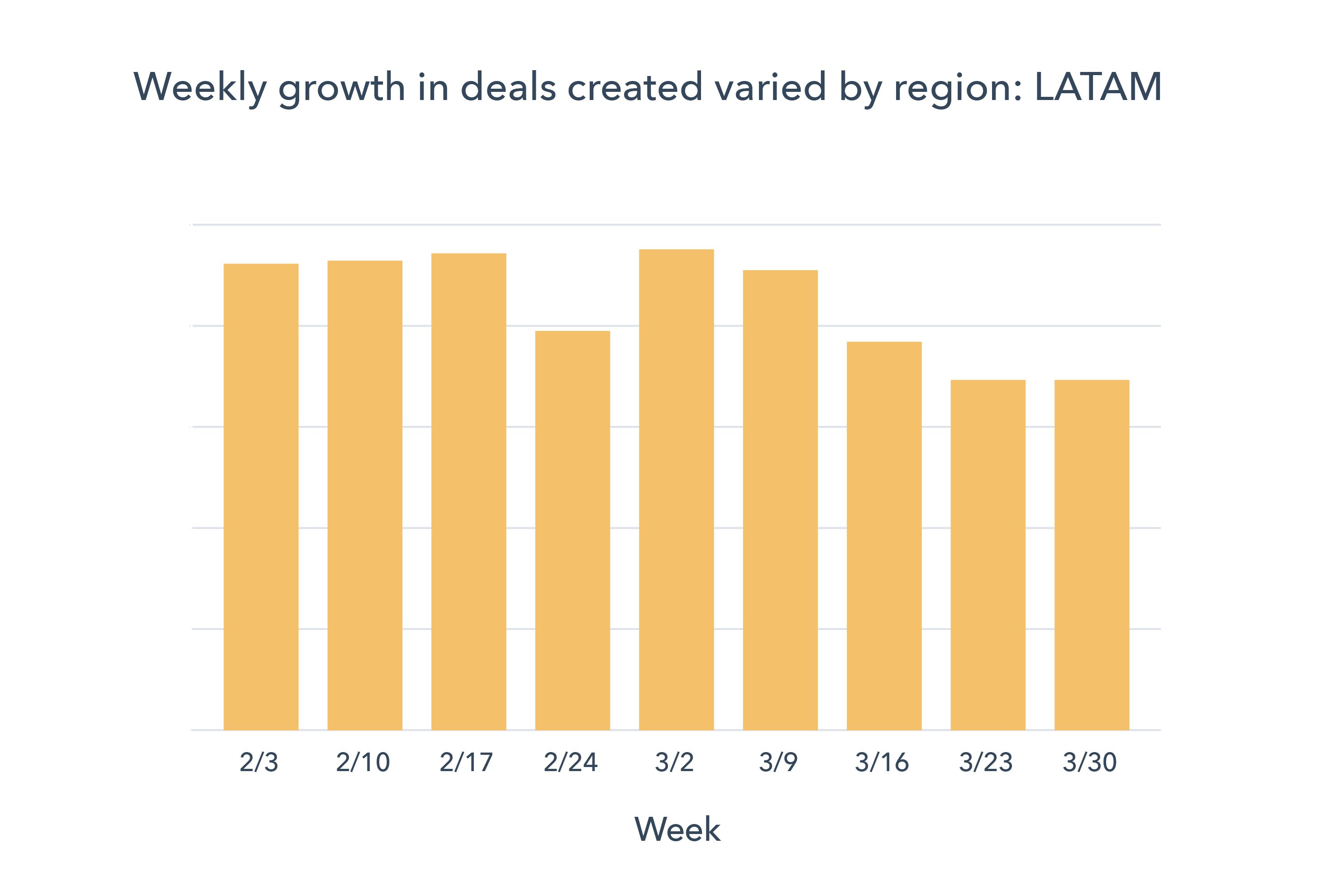
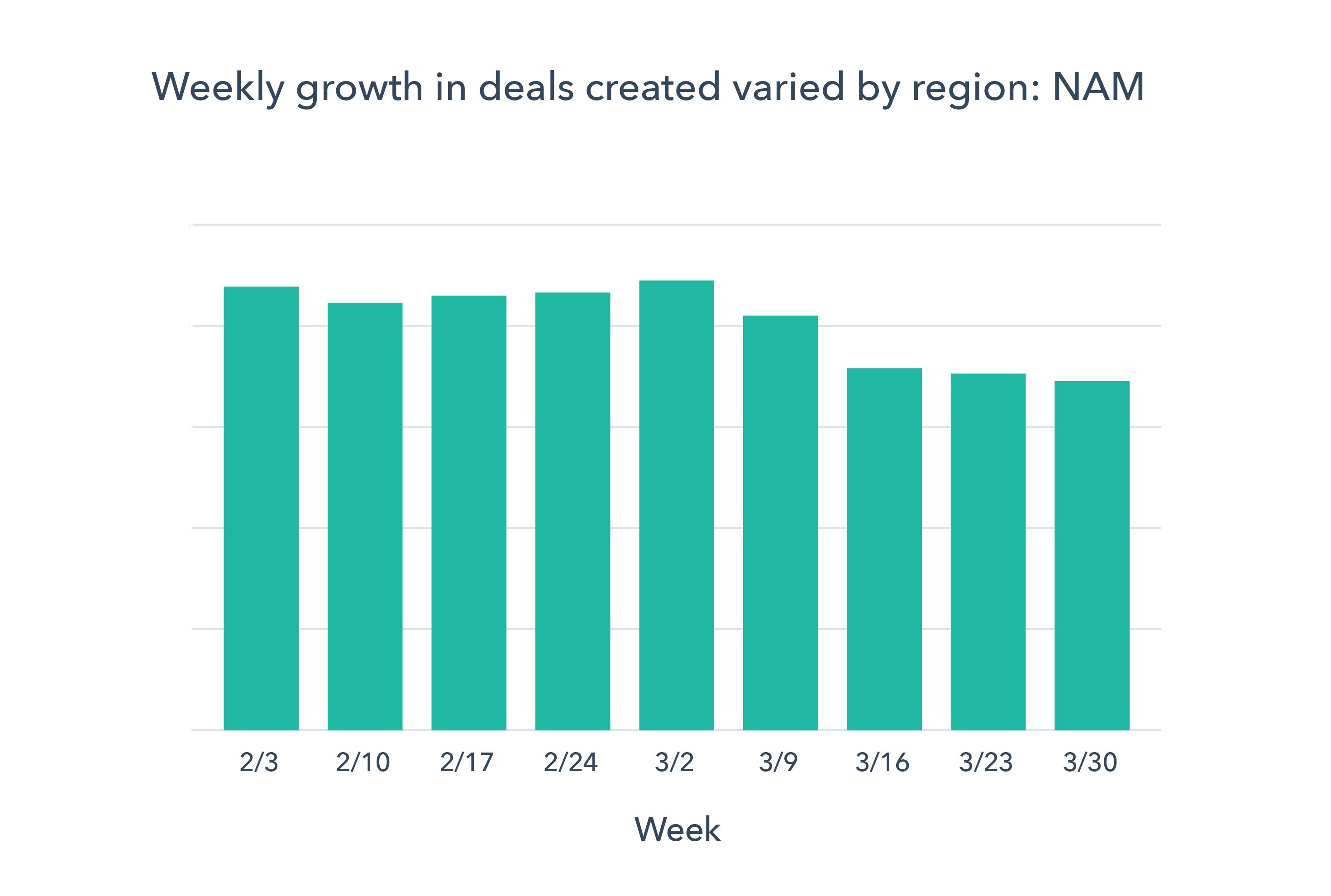
The number of deals closed fell globally from previous Q1 weekly averages by 21%, with the most noticeable decrease also happening after the week of March 16.
Your website is an important source of business right now.
Customers are initiating more interactions with businesses today than they were a year ago, and doing more research online.
Average monthly website traffic increased by 13% in March, compared to February.
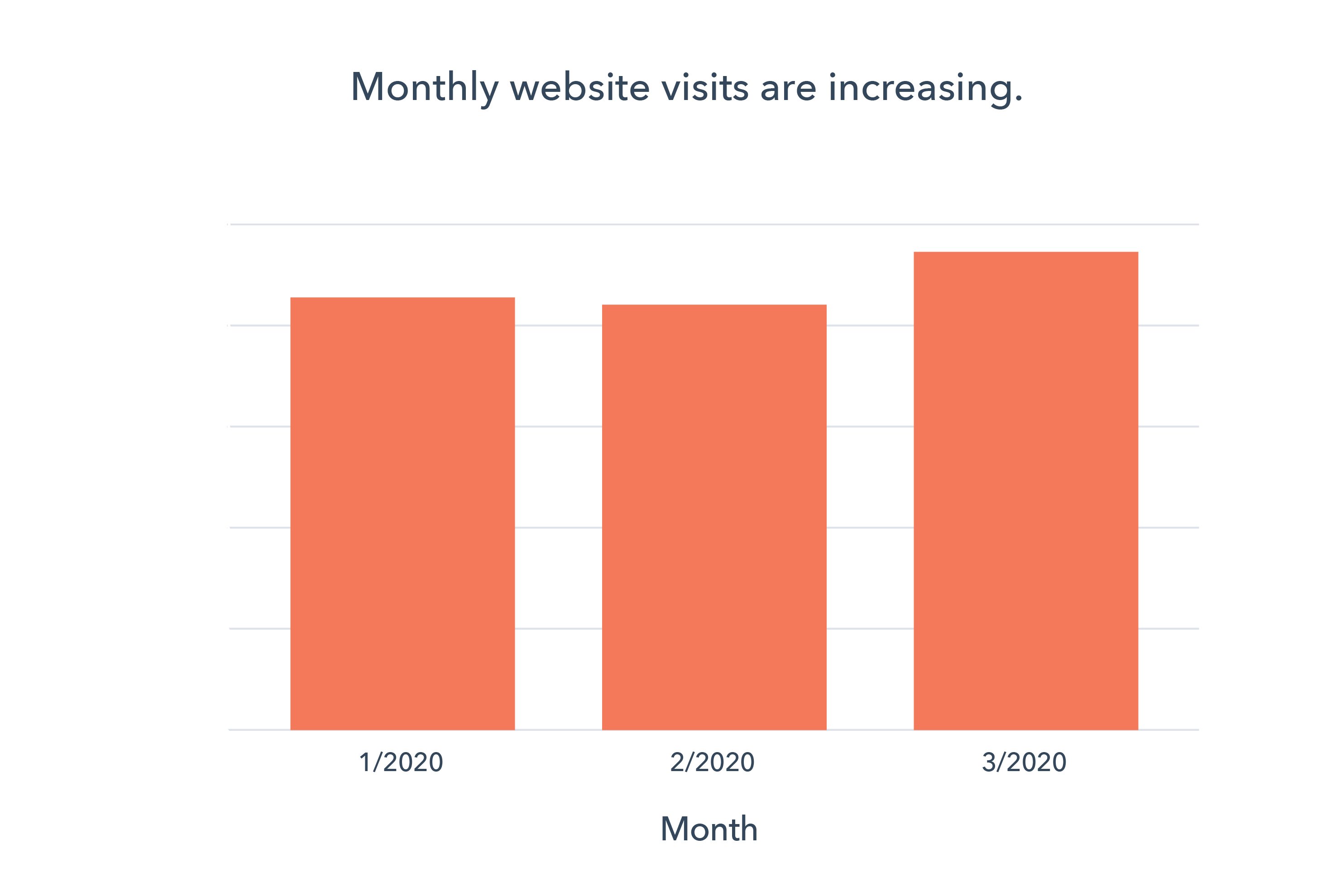
Weekly chat volume via onsite chat and Facebook Messenger increased 5% after March 16, based on previous Q1 global weekly averages.
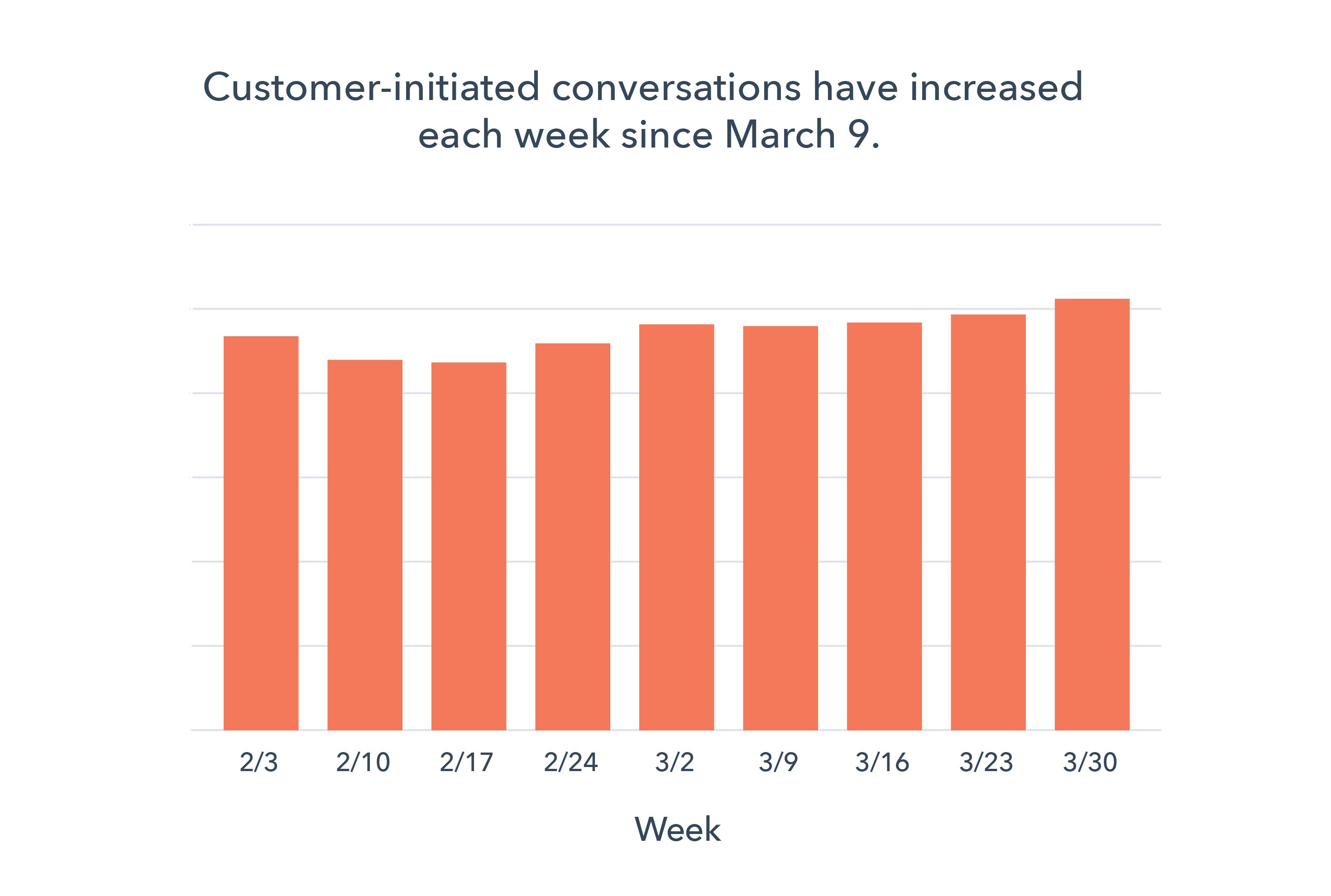
Marketing and sales teams are both reaching out to their customers more, with varying levels of success.
Marketing and sales teams sent a significantly higher volume of emails in March. However, only engagement with marketing emails increased, suggesting that opportunity exists to improve outreach and connect with the right buyers at the right time.
Sales outreach has increased, but responses are declining.
Sales teams were significantly more active in March, but buyers were less engaged with sales content. The lower response rate to outreach was ultimately reflected in lower deal volume.
- On a per-week basis, companies sent 23% more sales emails** the week of March 16 compared to prior weekly averages in Q1.
- Response rate to those emails began falling the first week of March, with a total decrease of 27% in March compared to February.
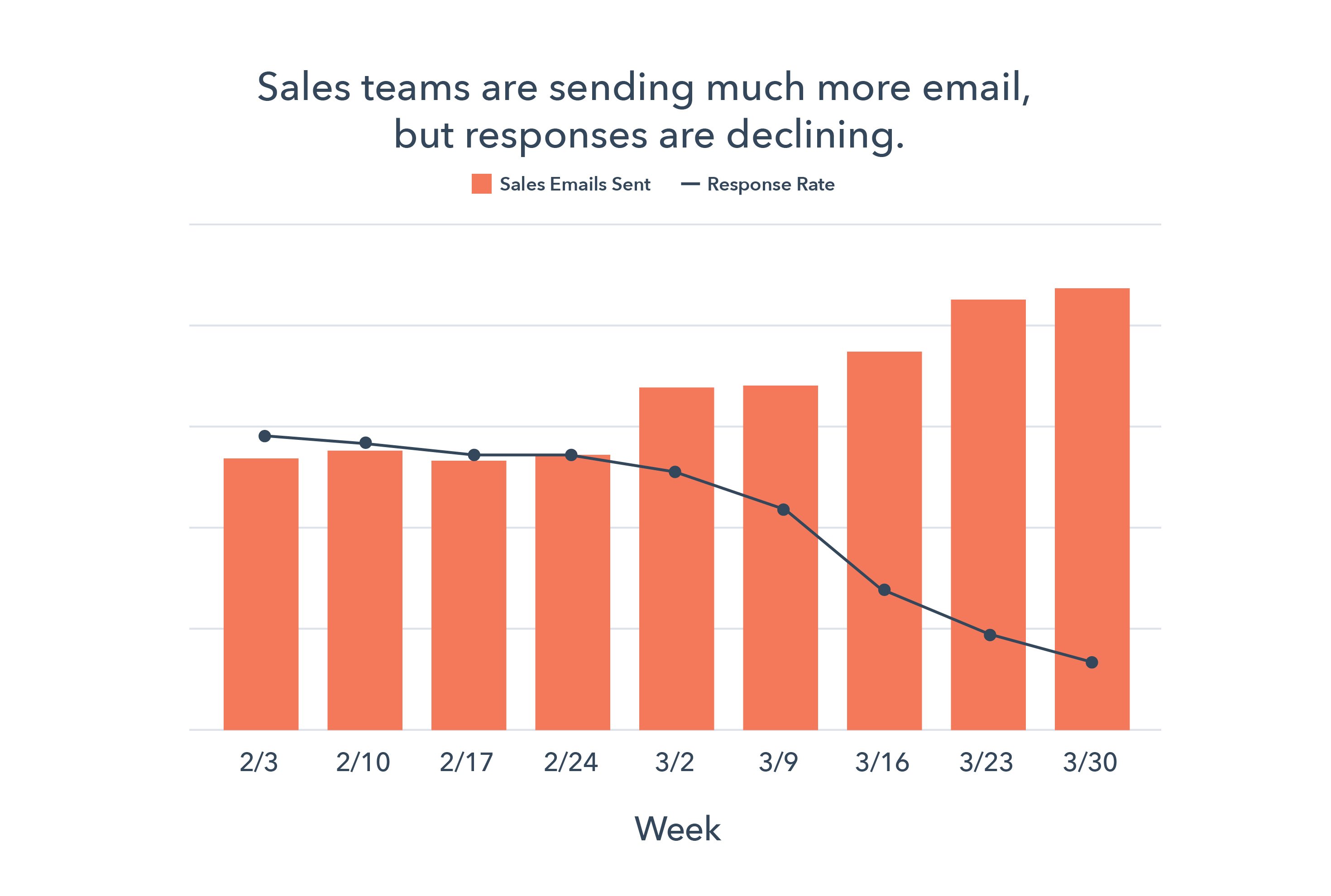
**Emails using the Sequences tool.
Marketing outreach, open rates, and database growth have increased since the start of the crisis.
Email open rates increased in March despite a significant jump in send volume. Corporate communications conveying COVID-19 related messages likely contributed to part of the growth in email volume, and we expect this metric to shift over time. Encouragingly, the number of average contacts added to HubSpot customers’ portals increased in the same time period.
Average marketing email volume increased 29% the week of March 16, while open rates increased by 53% the same week. Across the month, open rate increased by 21% overall.
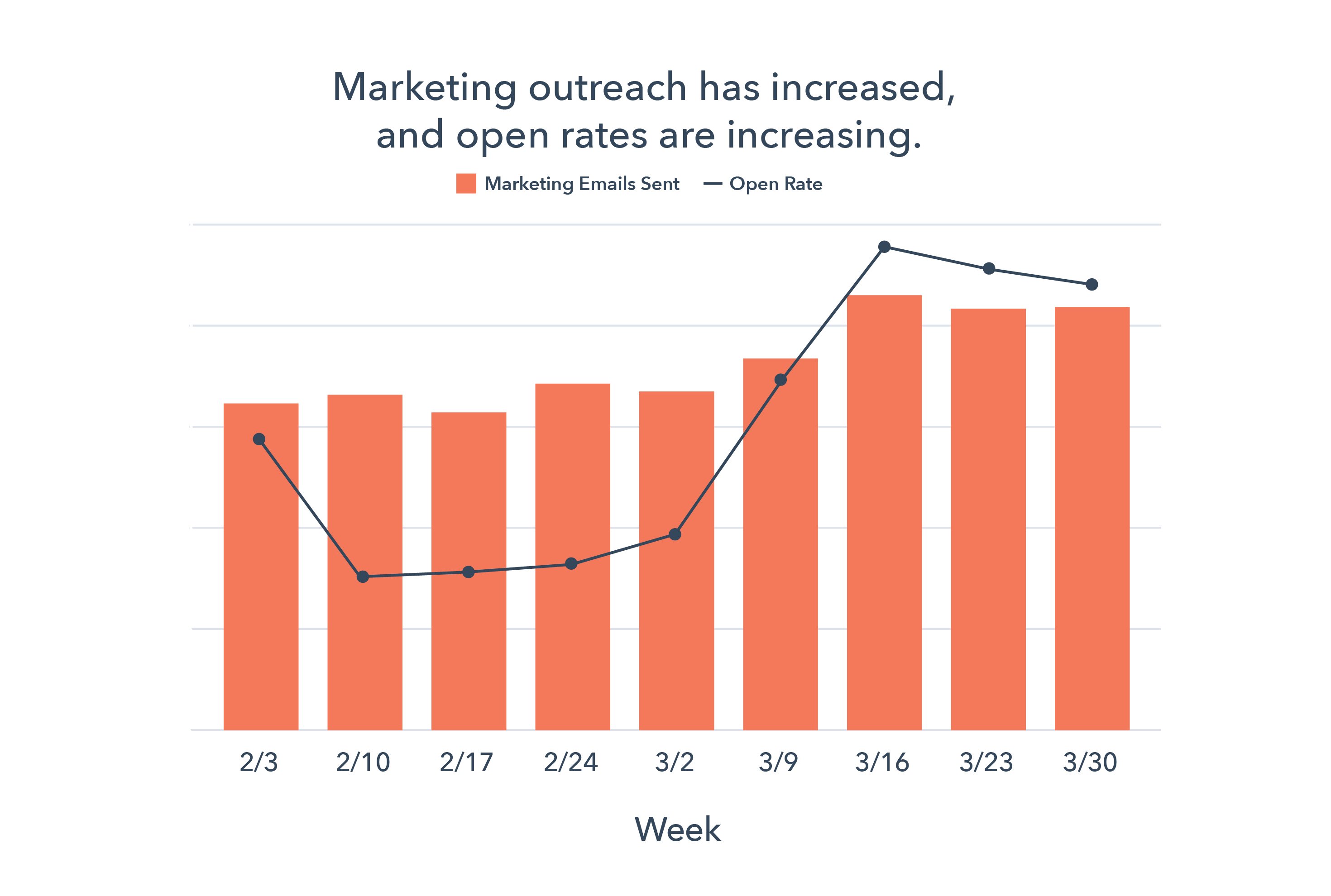
The weekly average number of contacts added per portal increased by 51% after March 16, based on prior Q1 global weekly averages.
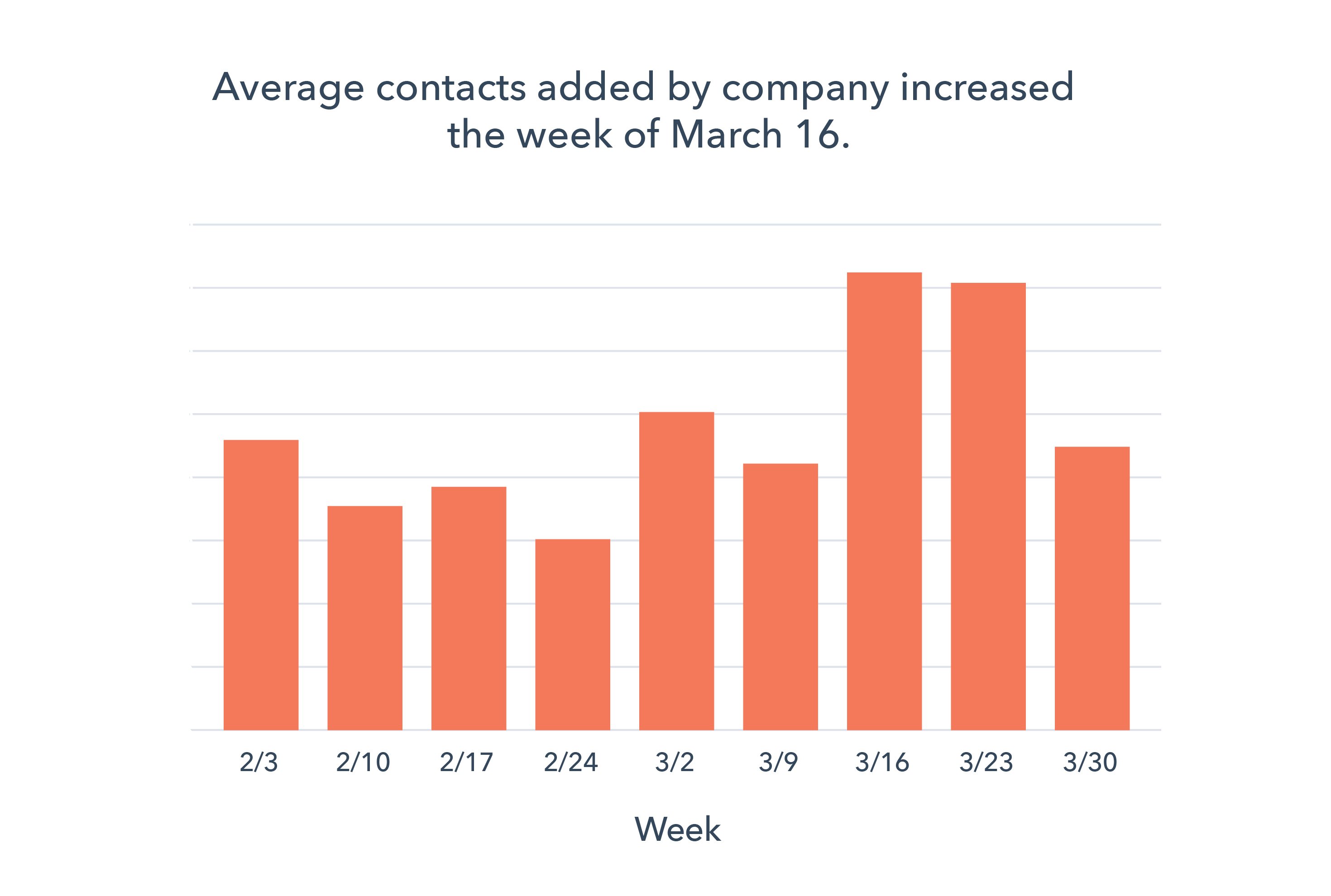
What This Means for Businesses
While this is early data, some opportunities for companies have already emerged.
Focus on education, not promotion.
The increase in website traffic, buyer-initiated conversations, and marketing email open rates suggest that customers are still looking to engage with companies.
Your customers may be more interested in learning and education right now. Our own website has seen an uptick in visits to educational resources like our blog, certifications, and Academy classes.
Instead of dialing up the promotion of your products and services during a crisis -- an approach that may be insensitive to your customer base, focus on nurturing the long-term relationship. Identify where you can help your customers today, without asking for anything in return.
Resources to Help
- Use this editorial calendar template to plan educational content
- Get started writing with these blog post templates
- Optimize content and get found online with our guide to SEO
Free Software to Get Started
Incorporate chat into your strategy.
Our data shows that chat volume has steadily increased over the last two months, and we believe this number is likely to continue growing. Conversational marketing offers a real-time way to answer customer questions, as well as automating the lead routing process so your business can serve prospective and existing customers even when your team is out of the office.
Investing in chatbots to get customers answers more quickly, automate lead qualification or book meetings can help your company meet the increase in customer inquiries.
Resources to Help
- Get up to speed with this beginner’s guide to conversational marketing
- Learn how marketers are using conversational marketing in 2020
- Free conversational marketing tools are included in HubSpot CRM
- Facebook Messenger integration with HubSpot
Refresh your sales pipeline.
Depending on your company’s sales process, a dip in new opportunities today may not impact your company’s profit & loss statement until several months from now. Many businesses will need to rethink what prospecting looks like to bolster their long-term pipeline.
Operationally, regularly adjust your sales projections to reflect potentially extended sales cycles or lower deal size so forecasts remain accurate. Just a touch of process (or improvements to existing processes) goes a long way in creating a clear picture of your business over time.
On individual calls, encourage your team to emphasize a helpful, consultative selling approach. Certain factors, like your customers’ budget and willingness to enter sales conversations at this moment, are out of your control. Instead of cold calling your whole database, use your knowledge of your customers’ industries to prioritize reaching out to:
- Industries that have been minimally impacted or those that are transforming quickly to meet the new challenges
- Industries where your solutions are particularly relevant or useful in this moment
Resources
- Rework your sales projections with this guide to sales forecasting and sales forecast template
- Maintain an accurate forecast with this sales pipeline tracker
Free Software to Get Started
- HubSpot CRM is free and comes with included sales acceleration tools
- Gmail and Google Calendar integrations with HubSpot
- Zoom integration with HubSpot
We hope these benchmarks provide useful context as you monitor your business’ health in the coming months. We’ll release refreshed insights every week, and over time plan to add additional breakdowns. You can sign up to be notified of new insights as they’re available below.
No comments:
Post a Comment